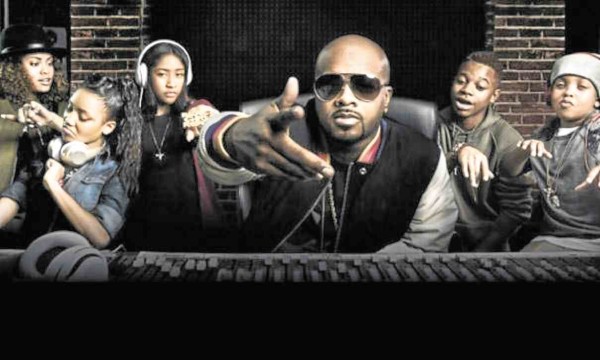NOW THAT television has become the most popular, dominant and influential medium in the viewing universe, literally hundreds of programs are vying for our favor and attention, with some really unusual formats and topics.
Topping our list of uniquely viewable shows this month is “The Rap Game” on the Lifetime channel (9 p.m., Thursdays).
As its title indicates, the program is a discovery and mentoring tilt for adolescent and teen rappers, who are taught and vetted by experienced veterans in the currently “in” and “fave” performing specialization.
Now that star rappers are making megamillions and flying high and mighty on the global recording and live performance scene, you can bet that thousands of young hopefuls are raring to see how far they can go.
Will they turn out to be the next Kanye West or Nicki Minaj? The training some of them get on “The Rap Game” will definitely give them a big advantage over other avid and addled aspirants!
Competitive edge
The specialized talent tilt will also give them a competitive edge by exposing them really early in the game to the sometimes harsh and chilling realities of the rap “music” industry.
Indeed, the training they’re getting is sometimes too “hard-knocks real” for some of the youths to take—but, they have to pay their dues if they want to make it in the really competitive field.
It looks like the young hopefuls are learning and toughening up, so that’s all to the good. The only aspect of the show that makes us fret is the usual TV penchant for stressing personal conflicts, bullying and backbiting in order to generate “exciting” controversy.
The kids are too young to be taken down this combative path, and should instead be encouraged to make it more on sheer talent and star output.
Other unusual shows on the boob tube include “Baby Bootcamp,” “Million Dollar Critic,” “Railroad Alaska,” “Fanatic Mechanic,” “United States of Paranoia,” “Gallery Girls,” “Sabong TV,” “Pinoy Beauty Queen Academy,” “Pit Bulls and Parolees,” “Untamed and Uncut,” “Treehouse Masters,” “Manhunt with Joel Lambert.” “Men, Women, Wild,” “Dual Survival,” “I Wouldn’t Go In There,” “Building Wild,” “Nazi Megastructures,” “Dirty Rotten Survival,” “Naked and Afraid,” “Man v. Viral,” “Tattoos After Dark,” “Kawai Int’l.,” “Healing Galing sa TV,” “Agri TV”—and “Finding Bigfoot.”
It really does take all kinds!
As you can see, each of these shows’ focus and format is so idiosyncratically unique that it’s easy to tell them apart—and for them to generate their own “niche” viewership.
For instance, “Fanatic Mechanic” is for mechanically and repair-oriented viewers. “Gallery Girls” surveys the urban art scene and tells appropriately “rich and bitchy” stories about well-born young women who work in the gallery trade and play and sleep around “loaded” art patrons and fashionable artists’ boudoirs and other posh playgrounds.
“Manhunt” is for crime and action buffs. “Tattoos After Dark” showcase the phantasmagoric creations of ink artists. “Pinoy Beauty Queen Academy” feeds off the national fetish for “perfect,” “official” pulchritude.
“Naked and Afraid” combines survival and “limited” titillation. And, “Finding Bigfoot” is an exercise in—speculative futility!
—Something for everybody, indeed.
